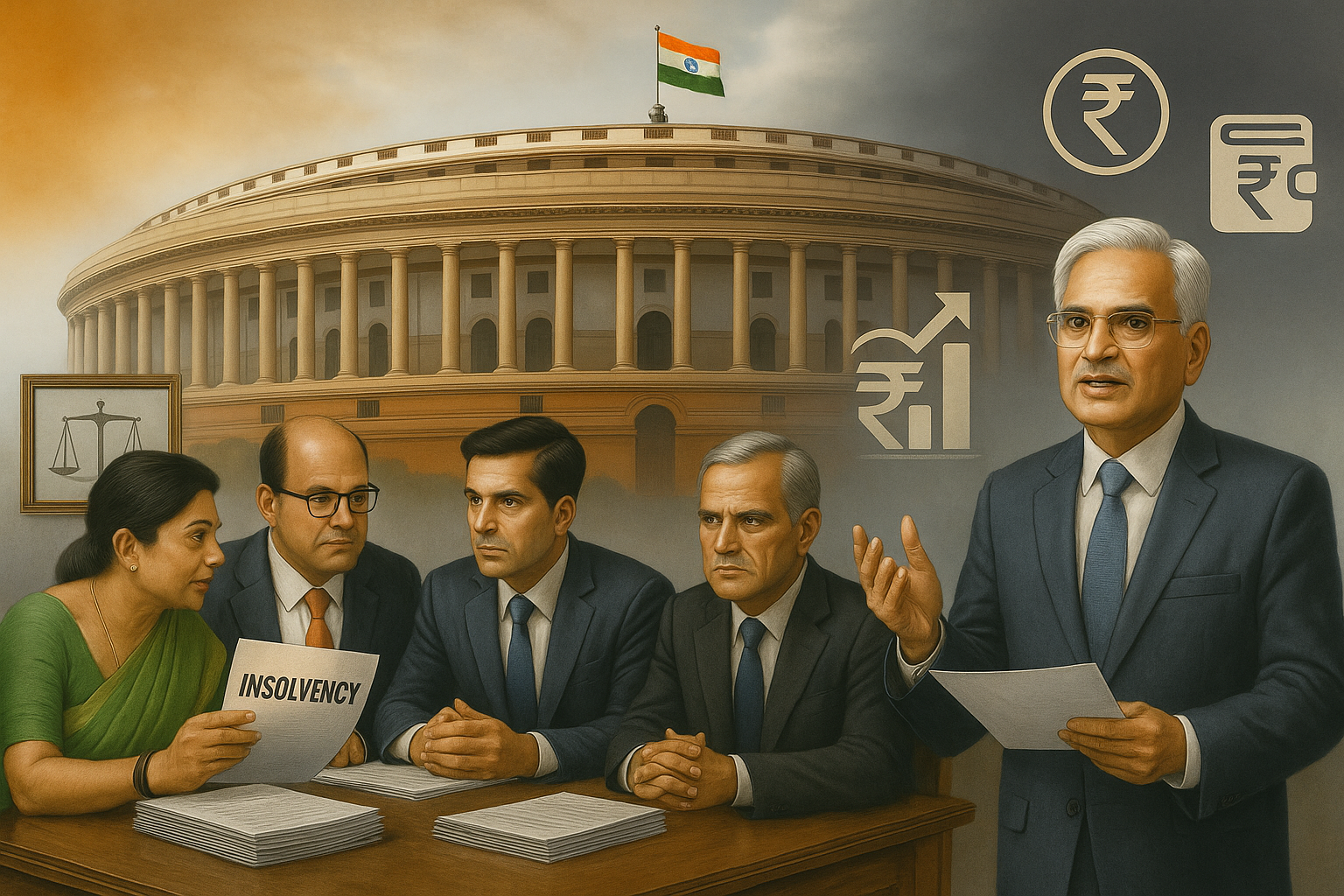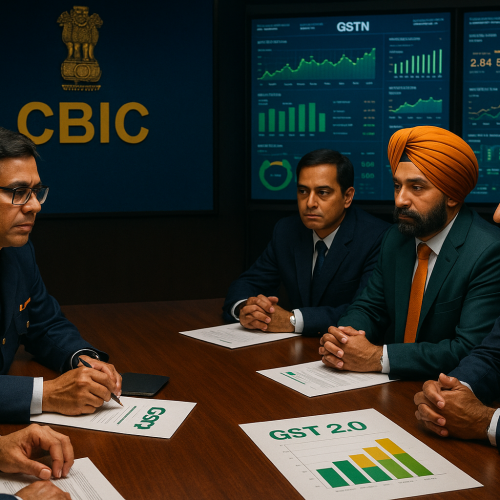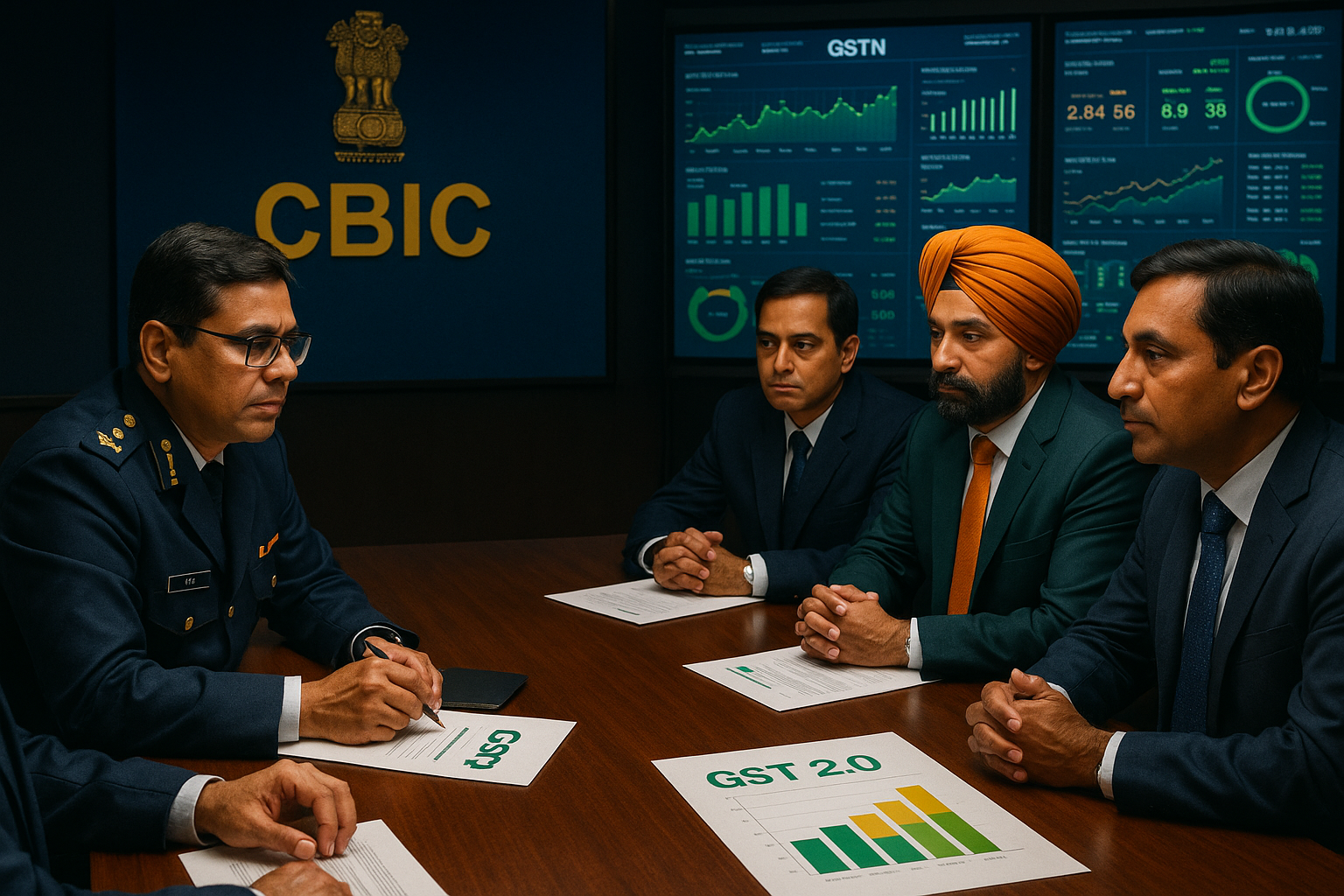India’s financial regulatory architecture may be heading for significant change following a pivotal meeting of the Parliamentary Standing Committee on Finance at Parliament House Annexe on July 10, 2025. Representatives from key public sector banks—including SBI, Bank of Baroda, Indian Bank, and Indian Overseas Bank—provided oral evidence on the performance of the Insolvency and Bankruptcy Code (IBC). In parallel, Reserve Bank of India (RBI) Governor Sanjay Malhotra briefed the committee on the central bank’s evolving role amid digital transformation, inflationary pressure, and global economic realignments.
High on the agenda was a proposed amendment to Section 31(4) of the IBC, addressing procedural redundancies involving Competition Commission of India (CCI) approval—a point of legal contention in the recent Supreme Court ruling in the AGI Greenpac–Hindusthan National Glass (HNG) case. Meanwhile, the committee also touched on the RBI’s policy outlook and Parliament’s broader economic oversight.
Background and Context
India’s IBC, enacted in 2016, was a landmark reform that consolidated and streamlined the country’s insolvency framework. Over the years, it has been amended multiple times to address judicial interpretations, market feedback, and bottlenecks in resolution timelines. One such sticking point has been the dual requirement of NCLT and CCI approvals for resolution plans in cases involving mergers or acquisitions.
The Supreme Court’s recent observations in the AGI Greenpac–HNG case reignited the debate over whether CCI scrutiny under Section 31(4) imposes unnecessary delays. Lawmakers are now considering an amendment in the upcoming Monsoon Session that could exempt certain transactions from this procedural requirement—subject to safeguards.
Simultaneously, the RBI’s presence at the meeting reflected the committee’s intent to align macroeconomic oversight with ground realities, especially as India embraces digital banking, tighter inflation targets, and a more assertive monetary stance.
Key Points from the IBC Hearing
Topic Area Key Observations
IBC Functionality Banks affirmed improvements in resolution efficiency since 2016
Section 31(4) Amendment Strong support voiced for easing CCI procedural overlap
Judicial-Executive Interface Need for clearer legislative guidance following SC observations
Debt Haircuts Concerns remain over low recovery values in large corporate cases
MSME Insolvency Access Calls for easier access to resolution for small businesses
Emerging Regulatory Signals from RBI Governor
Governor Sanjay Malhotra’s closed-door presentation reportedly emphasized:
Digital Financial Infrastructure: Strengthening supervisory capacity over digital lending platforms and embedded finance channels.
Inflation Management: RBI remains cautious amid sticky core inflation, and may hold rates through Q3 2025.
Credit Flow: Encouraging banks to extend credit cautiously amid rising unsecured retail lending.
Macroprudential Tools: Exploring dynamic provisioning norms and early-warning signals in the NBFC sector.
A senior committee member noted that the RBI’s tone “reflected continuity with a bias for prudence.”
Broader Parliamentary Context
In a separate but concurrent meeting, the Parliamentary Standing Committee on Home Affairs, chaired by Dr. Radha Mohan Das Agrawal, discussed India’s growing cybercrime threat. The committee is scheduled to reconvene on July 11, with discussions likely to cover surveillance reforms, cross-border digital crimes, and citizen grievance redressal systems.
Expert Viewpoints
Dr. Arvind Panagariya, Chair, 16th Finance Commission:
“Streamlining the IBC process is long overdue. Delays hurt creditors and disincentivize resolution. The Section 31(4) amendment would be a surgical fix.”
Meera Sanyal, former banker and financial sector observer:
“RBI’s posture signals a balancing act—maintaining financial stability without curbing innovation. Regulatory clarity in the digital lending space is urgently needed.”
Legal Perspective – AGI Greenpac–HNG Case:
In this landmark case, the Supreme Court questioned the mandatory CCI clearance for approved resolution plans—highlighting a conflict between insolvency timelines and competition oversight. The proposed amendment aims to resolve this legislative ambiguity.
Market and Policy Implications
Faster Resolutions: Amending Section 31(4) may improve timelines and reduce friction for M&A-based insolvency resolutions.
Stronger Credit Climate: A functional and efficient IBC system boosts creditor confidence and helps clean up bank balance sheets.
Digital Regulation Momentum: The RBI’s focus on fintech oversight could lead to licensing updates, data governance norms, and sandbox expansions.
Cross-sector Coordination: Rising interaction between regulatory bodies (RBI, CCI, IBBI) may prompt more structured inter-agency protocols.
Conclusion
The July 10 Finance Committee proceedings underscored India’s proactive approach to evolving its bankruptcy and financial supervision frameworks. By proposing targeted amendments to the IBC and receiving critical policy guidance from the RBI, lawmakers are working to reinforce the institutional pillars of India’s financial system. At a time of accelerating credit expansion and digital transformation, robust oversight and streamlined legislation remain essential to sustaining economic momentum.












